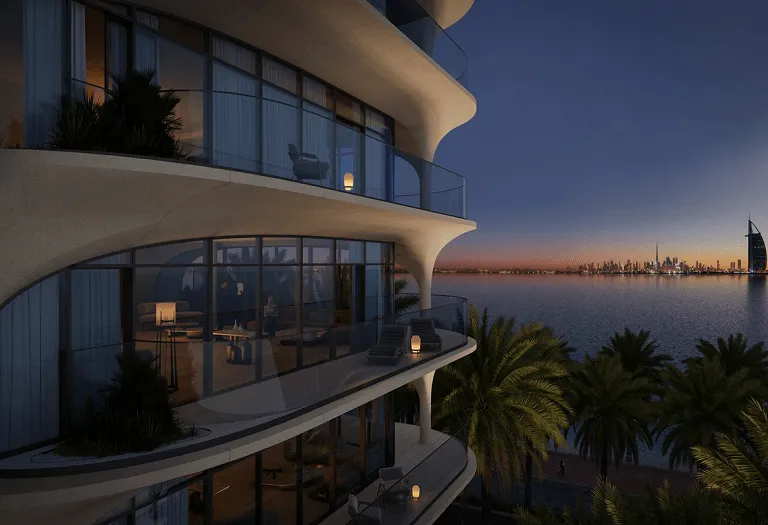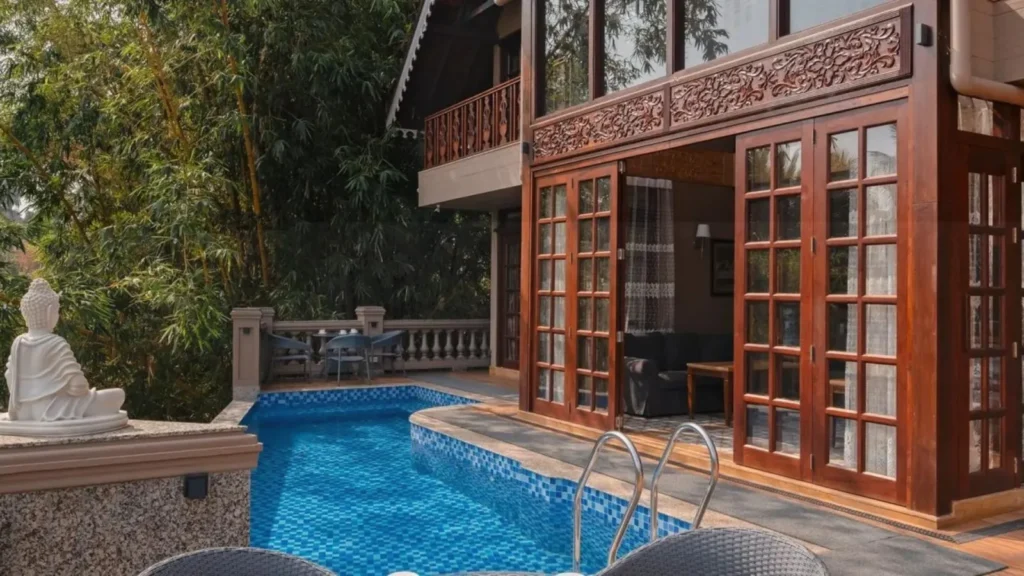
Waterfront villas have always carried an aura of prestige, exclusivity, and timeless value. Whether nestled beside the tranquil sea, a bustling marina, or a serene lagoon, these properties offer more than scenic beauty—they deliver exceptional financial rewards. As global demand for luxury coastal living surges, investors are recognizing that waterfront villas aren’t just indulgent purchases—they’re strategic assets with powerful long-term rental potential.
Let’s dive into why these properties are becoming top choices for smart investors, what drives their consistent demand, and how they outperform traditional real estate assets over time.
The allure of living by the water is almost universal. The soothing views, refreshing air, and sense of serenity make waterfront homes among the most desired real estate assets across the globe. Beyond lifestyle, the psychology of exclusivity plays a strong role. There’s only so much coastline or waterfront space available, making such properties inherently scarce and valuable.
This scarcity automatically drives up both property prices and rental demand. Tenants looking for vacation stays, corporate leases, or even long-term rentals are often willing to pay premium rates to enjoy unobstructed views and a unique sense of luxury.
For investors, this emotional and lifestyle-driven demand translates into solid financial consistency and minimal vacancy periods.

Waterfront villas combine three winning factors: location prestige, lifestyle desirability, and financial stability. Together, these make them resilient to market fluctuations and ideal for generating strong rental income.
1. Limited Supply and High Demand
Waterfront land is limited, especially in popular destinations like Dubai, Miami, Sydney, and the Maldives. Because supply cannot expand easily, the properties retain their exclusivity, even when other parts of the market experience oversupply.
2. Year-Round Rental Potential
Unlike city apartments that may see fluctuating occupancy based on job markets or seasonal demand, waterfront villas attract consistent interest. Holidaymakers, business travelers, and even digital nomads now look for high-end villas with water views for extended stays.
3. Premium Rental Yields
Waterfront villas often command rental rates up to 30–50% higher than similar inland properties. Tenants value the experience—direct beach access, private pools, and a sense of retreat—which translates to higher willingness to pay.
4. Long-Term Asset Appreciation
Over the years, waterfront properties typically appreciate faster than standard homes. Their limited supply, coupled with ongoing demand, ensures stable growth and protection from inflationary pressures.
When it comes to waterfront real estate, not all locations are equal. The exact setting of the villa—whether it’s oceanfront, lagoon-side, or overlooking a marina—affects its rental performance.
Coastal Areas: Villas along beaches tend to have the highest rental rates, driven by vacationers and tourists seeking proximity to the sea. Properties with direct beach access or private stretches of sand enjoy strong short-term occupancy.
Marina Front Villas: These appeal to yacht owners, expatriates, and long-term corporate tenants. Proximity to lifestyle amenities like restaurants, retail, and marinas makes them ideal for steady, long-term leases.
Lakeside or Canal Properties: These offer a quieter and more private setting, attracting families or professionals seeking scenic tranquility without the bustle of a tourist hotspot.
Location also determines insurance costs, maintenance expenses, and property taxes—all essential factors for calculating true rental yields. Choosing the right waterfront type can optimize returns and reduce long-term costs.
Global coastal destinations are experiencing a surge in interest from high-net-worth individuals and institutional investors. Let’s explore a few leading examples.
Dubai: The Palm Jumeirah and Dubai Marina have become synonymous with luxury waterfront living. Villas here boast high occupancy rates and consistent appreciation due to international demand.
Maldives and Bali: These resort islands attract steady tourist flows, allowing investors to maintain full-year rental bookings, especially when properties are managed by hospitality brands.
Miami and Los Angeles: In the US, waterfront homes are seen as both status symbols and stable investment vehicles. Properties near marinas and beaches witness some of the strongest resale values nationwide.
Mediterranean Coastlines: From Spain’s Costa del Sol to the French Riviera, Europe’s sunny waterfronts remain timeless attractions for long-term renters and second-home buyers alike.
Each of these regions shares one common trait—waterfront exclusivity is finite, and investor appetite continues to grow.
Understanding who rents waterfront villas is key to sustaining long-term occupancy.
1. Affluent Professionals and Expats: Many corporate executives and expatriates seek fully furnished villas in waterfront communities for privacy, space, and proximity to international business hubs.
2. Vacationers and Digital Nomads: With remote work becoming the norm, digital nomads are increasingly drawn to luxurious homes offering resort-like amenities.
3. Long-Term Family Rentals: Families relocating for work or seeking an elevated lifestyle often choose long-term villa rentals rather than purchasing property immediately.
4. Seasonal Luxury Tenants: Wealthy travelers who split their time between cities often lease waterfront villas for several months at a time, providing lucrative seasonal revenue.
By catering to these diverse groups, owners can balance both short-term and long-term leasing opportunities for maximum profitability.
Waterfront properties have exceptional potential, but their success depends on several operational and market-related factors.
1. Property Management Quality
A professional management team ensures maintenance, marketing, and tenant satisfaction. High-end tenants expect hotel-level service—poor upkeep can quickly reduce rental value.
2. Accessibility and Infrastructure
Proximity to airports, city centers, and leisure zones adds immense value. Tenants are drawn to convenience as much as scenery.
3. Sustainable Features
Eco-conscious tenants appreciate villas with solar energy systems, rainwater harvesting, and energy-efficient appliances. Sustainability enhances long-term market appeal.
4. Design and Amenities
Spacious interiors, infinity pools, direct water access, and landscaped gardens differentiate luxury villas. A well-designed waterfront property always commands higher rent.
5. Regulatory Stability
Some regions restrict foreign ownership or short-term rentals. Investors should research local policies to ensure flexibility and avoid compliance issues.

To fully capitalize on a waterfront villa’s earning potential, investors must adopt a flexible and data-driven leasing strategy.
1. Blend Short and Long-Term Rentals
Using hybrid models—short-term for peak seasons and long-term for low periods—ensures year-round occupancy and steady cash flow.
2. Use Digital Platforms
Listing villas on global platforms like Airbnb Luxe, Booking.com, and specialized luxury portals helps target the right clientele internationally.
3. Offer Value-Added Services
Concierge, private chefs, and housekeeping elevate guest experiences, allowing owners to justify premium rates and attract repeat tenants.
4. Dynamic Pricing Models
Using data analytics to adjust pricing based on demand seasons and events can boost occupancy and profits.
Many investors chase quick profits through short-term rentals. However, waterfront villas shine brightest in the long run.
Steady Appreciation: The limited supply and strong emotional value mean prices rarely depreciate, even during downturns.
Loyal Tenant Base: Corporate and family renters often renew leases annually, minimizing vacancy risks.
Predictable Income: Long-term contracts ensure consistent revenue, ideal for financial planning.
Reduced Maintenance Pressure: Frequent turnovers in short-term rentals lead to higher wear and tear. Long-term leases, on the other hand, maintain property condition and lower costs.
For serious investors, focusing on sustainable growth rather than seasonal spikes results in more predictable, stable returns.
While the rewards are strong, waterfront properties come with unique challenges.
Maintenance Costs: Constant exposure to moisture and salt can affect building materials, requiring regular upkeep.
Insurance Premiums: Waterfront villas face higher insurance rates due to potential flooding or storms in some areas.
Management Demands: These properties often require hands-on oversight or a trusted management firm.
Yet, when these challenges are managed effectively, the net return on investment remains highly favorable.
As urbanization intensifies, people are seeking peaceful escapes that combine nature with connectivity. Waterfront villas perfectly embody this balance.
Looking ahead, these properties are expected to outperform traditional real estate categories due to:
With technology facilitating international leasing and property management, global investors can now manage and rent their villas seamlessly from anywhere in the world.
Investing in waterfront villas isn’t just about owning a beautiful property—it’s about securing a lifestyle-driven, income-generating asset that grows in value over time. These villas attract a stable tenant base, offer premium rental yields, and ensure consistent appreciation backed by natural scarcity.
Whether located in Dubai’s luxury coastlines, the Mediterranean, or tropical islands, the long-term rental potential of waterfront villas remains unmatched. For investors seeking enduring returns, these properties represent the perfect intersection of luxury and longevity.
Do Follow Estate Magazine on Instagram.
